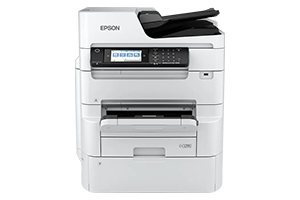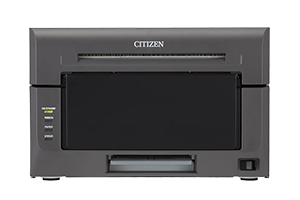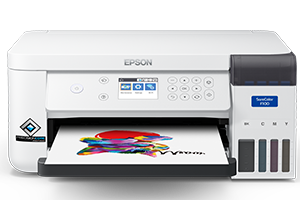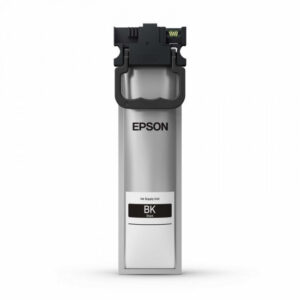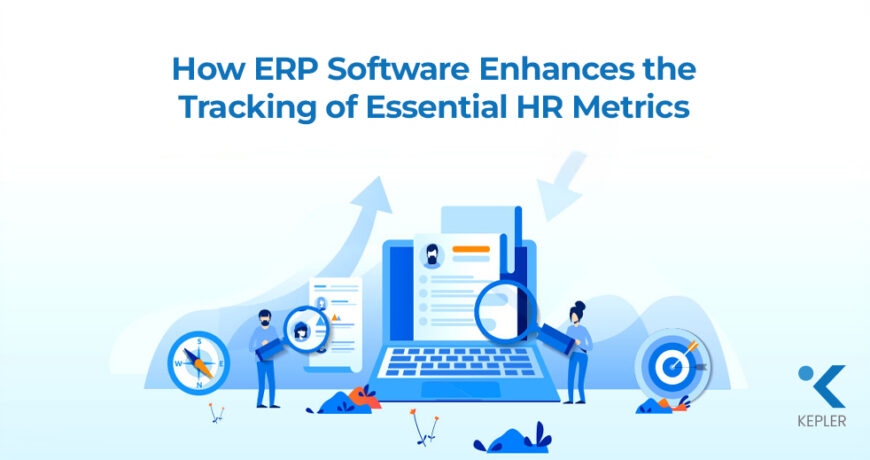How ERP Software Enhances the Tracking of Essential HR Metrics Leave a comment
In today’s fast-paced business environment, success is no longer driven by guesswork. Organizations that thrive are those that make data-driven decisions and nowhere is this more vital than in Human Resources. From hiring to retention, employee engagement to productivity, every people-related decision influences your bottom line.
That’s where HR metrics come into play. By tracking key data points related to your workforce, businesses can gain powerful insights that inform smarter strategies, optimize employee performance, and drive sustainable growth. These metrics bridge the gap between HR activities and organizational goals, turning HR into a strategic powerhouse rather than just an administrative function.
ERP Software plays a crucial role in enabling companies to monitor, track, and evaluate these metrics in real time, automating reports, improving accuracy, and saving time.
Tracking essential HR metrics isn’t just helpful it’s critical. In this blog, we’ll walk you through everything you need to know about HR metrics, which ones to track, and how they can elevate your organization’s success. Let’s dive in.
Understanding HR Metrics
What Are HR Metrics?
Think of HR metrics as the pulse of your organization’s workforce. These are measurable values used by HR departments to gauge the effectiveness of various initiatives, policies, and practices. From recruitment performance to employee satisfaction, HR metrics transform abstract people strategies into quantifiable data.
Why Do They Matter?
Imagine managing a business without knowing your cost-per-hire or employee turnover rate. Sounds risky, right? Without HR metrics, businesses fly blind. But with the right metrics in place, HR teams can:
- Identify issues before they escalate
- Align HR goals with business goals
- Make evidence-based decisions
Benefits at a Glance
Using HR metrics helps you:
- Make informed decisions based on real-time data
- Increase employee satisfaction through better management
- Enhance HR’s strategic value in your organization
Before we explore which metrics matter most, let’s first understand how each metric influences your success. Ready?
Essential HR Metrics to Track
Let’s explore the HR metrics that truly make a difference. These aren’t just numbers they tell a story about your people, your culture, and your operational efficiency.
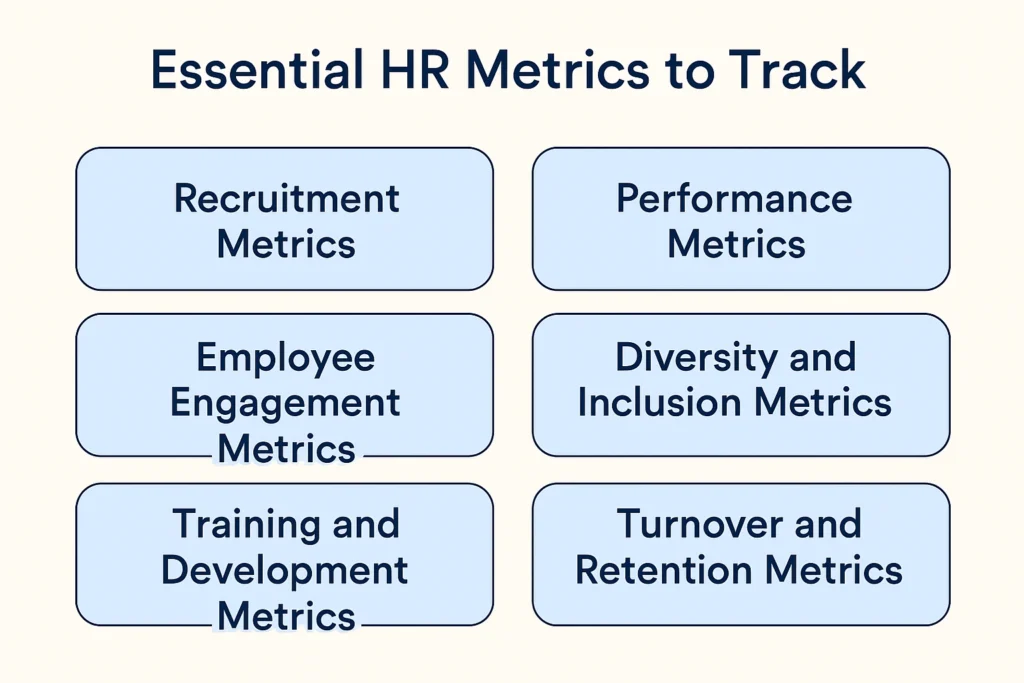
1. Recruitment Metrics
Hiring the right talent, at the right time, and at the right cost is essential for driving sustainable business growth. Recruitment metrics offer critical insights into the effectiveness of your hiring strategies. Time-to-hire measures how long it takes to fill a positionlonger durations may signal bottlenecks or inefficiencies in the recruitment process. Cost-per-hire reveals the financial investment associated with bringing new talent on board, helping you assess and optimize recruitment spending. Meanwhile, the offer acceptance rate shows how appealing your compensation packages, employer brand, and overall value proposition are to prospective candidates. Tracking these metrics ensures your recruitment process remains competitive, efficient, and aligned with your business goals.
2. Employee Engagement Metrics
Engaged employees are more productive, loyal, and deeply connected to your company’s mission, making employee engagement a crucial factor in long-term success. Monitoring the productivity rate helps determine if employees are performing efficiently and meeting performance expectations. A high absenteeism rate can be a red flag, often pointing to issues like burnout, stress, or lack of motivation. Employee satisfaction scores, usually gathered through regular surveys, provide valuable insight into overall morale, workplace culture, and how employees perceive their roles and leadership. Together, these metrics help organizations foster a motivated and committed workforce.
3. Training and Development Metrics
A culture of continuous learning is key to enhancing employee performance, boosting retention, and staying competitive in a dynamic business environment. Tracking training cost per employee helps evaluate whether your learning and development (L&D) investments are delivering measurable value. The training completion rate indicates how many employees are actively engaging with and completing your programs essential for ensuring ROI and knowledge transfer. Additionally, learning resource effectiveness, often assessed through post-training evaluations or assessments, provides insights into the relevance and quality of the training materials. These metrics collectively ensure your development initiatives are impactful and aligned with organizational goals.
4. Performance Metrics
Understanding how employees contribute to business outcomes is essential for driving growth and achieving strategic objectives. Goal attainment rate measures the percentage of employees meeting their targets, providing a clear view of individual and team effectiveness. Performance improvement over time highlights progress and development through ongoing reviews, helping managers identify top performers and areas needing support. Additionally, resource conversion efficiency evaluates how effectively human resources are transformed into productive outcomes, offering insight into overall workforce productivity. By tracking these metrics, organizations can align performance with business goals and foster a high-performing culture.
5. Diversity and Inclusion Metrics
A diverse and inclusive workplace drives innovation, improves decision-making, and enhances a company’s ability to connect with a broader customer base. Key metrics such as the diversity hiring rate help evaluate whether your recruitment strategies are attracting talent from varied backgrounds. Representation ratios, including gender, ethnicity, and disability inclusion across different departments, shed light on how equitably diversity is distributed throughout the organization. Meanwhile, pay equity ensures that employees with similar roles and qualifications receive fair compensation, regardless of background. Monitoring these metrics helps build a more equitable, dynamic, and future-ready workforce.
6. Turnover and Retention Metrics
High employee turnover can significantly impact an organization’s productivity, costs, and team morale, making it essential to monitor retention closely. Tracking voluntary vs. involuntary turnover helps identify whether employees are choosing to leave or being let go, shedding light on potential workplace or management issues. The retention rate reflects your ability to retain talent over time and indicates overall employee satisfaction and engagement. Additionally, exit interview insights provide valuable qualitative data to uncover the underlying reasons behind departures. Together, these metrics help organizations reduce turnover and build a more stable, committed workforce.
Benefits of Tracking HR Metrics
You might be wondering what’s the real payoff of all this tracking? Let’s break down how these metrics directly influence your business outcomes.
- Better Decision-Making
When your strategies are guided by data, every HR decision becomes smarter and more aligned with organizational goals.
- Enhanced Employee Engagement
Tracking and acting on engagement metrics can help you create a more motivated, satisfied, and productive workforce.
- Improved Workforce Planning
Knowing how long it takes to hire and who is likely to leave helps you anticipate needs and avoid disruptions.
- Smarter Training Investments
By monitoring training effectiveness, you can fine-tune your programs to maximize ROI and ensure employees get the skills they need.
- Increased Operational Efficiency
When people perform better and stay longer, the organization becomes leaner, faster, and more competitive.
Implementing HR Metrics Effectively
So, how do you bring all this to life? Here’s how to implement HR metrics that drive real value.
1. Set Clear Objectives
Don’t just track data for the sake of it. Define what success looks like for your business and align your metrics accordingly.
2. Use the Right Tools
This is where business software comes into play. An integrated business solution like an HR module within an ERP system ensures data accuracy, automation, and real-time tracking without the manual mess.
3. Analyze Regularly
HR metrics aren’t “set and forget.” Regular reviews are essential to understand trends, uncover issues, and adapt strategies.
4. Turn Data into Action
The magic happens when insights lead to action. Whether it’s redesigning onboarding or revamping a training program, use the data to make better decisions.
FAQs
Q1. What’s the most important HR metric to track?
That depends on your business goals. For fast-growing companies, recruitment and retention might take priority. For established firms, performance and engagement could be more critical.
Q2. Can small businesses benefit from HR metrics?
Absolutely. Even simple metrics like turnover rate or training cost per employee can help small businesses make smarter decisions.
Q3. How often should HR metrics be reviewed?
Monthly or quarterly reviews are ideal, but this depends on the metric and your business needs.
Q4. Do I need ERP Software to track HR metrics?
Yes, ERP Software is essential for accurate, real-time tracking and streamlined analysis of HR metrics across all functions.
Conclusion
HR metrics are more than just numbers; they’re your roadmap to building a stronger, more resilient organization. In a world where data drives every competitive edge, businesses that embrace HR analytics are positioned to lead.
Whether you’re focusing on engagement, performance, diversity, or training, tracking the right metrics allows you to grow smarter, not just faster.
At Kepler Tech LLC, one of the Best Business solution providers in Dubai, we help companies implement tools like ERP Software to streamline their HR operations and unlock powerful insights. If you’re ready to elevate your workforce strategy, let’s talk.





